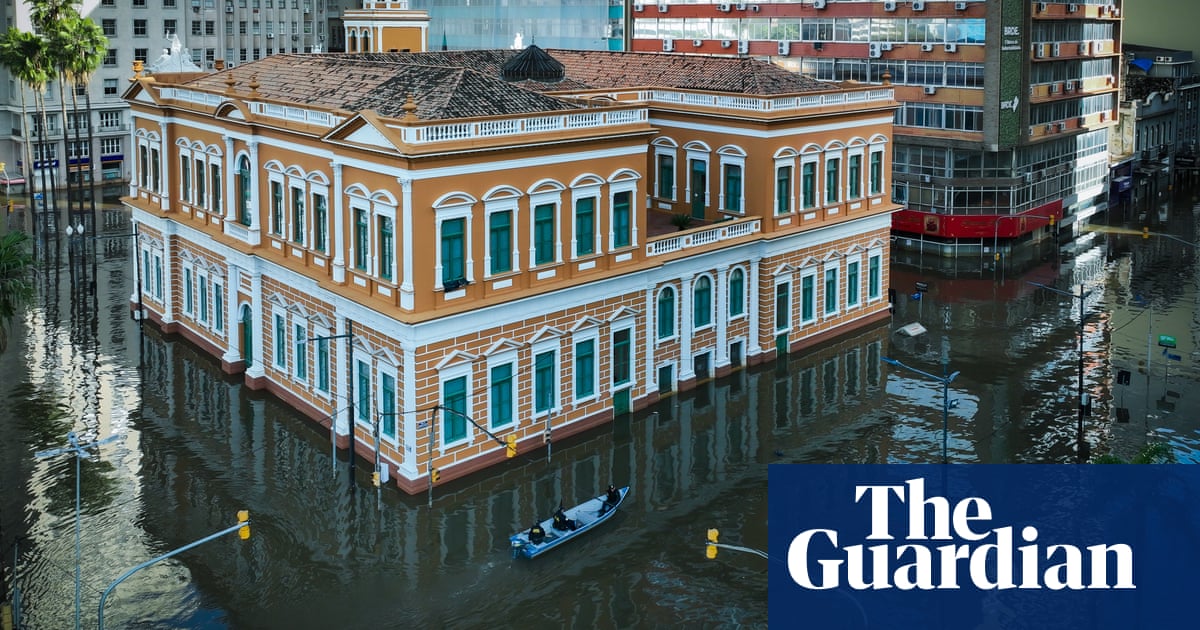World
Brazil counts cost of worst-ever floods with little hope of waters receding soon

Three weeks after one of Brazil’s worst-ever floods hit its southernmost state, killing 155 people and forcing 540,000 from their homes, experts have warned that water levels will take at least another two weeks to drop.
The death toll across Rio Grande do Sul is still increasing daily, and more than 77,000 displaced people remain in public shelters, prompting the state government to announce plans to build four temporary “tent cities” to accommodate them.
On Friday, the state’s governor, Eduardo Leite, said the costs to rebuild will be “much higher” than the 19bn reais (£2.9bn) he initially estimated.
Several cities are still underwater, including the state’s capital, Porto Alegre, where 46 of the 96 neighbourhoods were flooded. Even residents of non-flooded areas have had to endure days without electricity and potable water.
Of the seven main rivers in the state, five are still above the maximum water level, and experts say there is little hope the waters will recede anytime soon.
“These rains were typical of the climate crisis: very intense, with a large volume of water concentrated in a short period”, said Anderson Ruhoff, professor at the Institute of Hydraulic Research (IPH) of the Federal University of Rio Grande do Sul.
In just three days, the state saw the amount of rain normally seen over four months.
The storm caused overflowing in the Taquari, Caí, Pardo, Jacuí, Sinos and Gravataí rivers, all of which flow into the Guaíba, a massive body of water which runs through Porto Alegre.
In just 48 hours, the water level of the Guaíba rose to more than 5 meters, overwhelming drainage dykes, and floodwaters poured through the city. Dyke containment systems failed to contain the water.
The stadiums of the region’s two biggest football teams, Grêmio and Internacional, found themselves underwater forcing matches to be delayed.
Since then, the rains have eased, but the floods persist – and the water levels are likely to remain high for days.
Rodrigo Paiva, another professor at IPH said that while water was gradually draining out of the Guaíba, more water was still coming in from upstream.
“There is still a large volume stored in the river floodplains above the Guaíba,” he said. “That’s why it is releasing water very slowly,” said Paiva.
Both he and Ruhoff believe that in the best-case scenario – which means if there isn’t much more rain – the floods will endure at least until the end of May.
“There is still a lot of water to drain,” said Ruhoff. “At this time of year, we have rain every five or seven days, which is happening now: the cold fronts are hitting the state and causing rain, which delays the drop in water levels.”
Meanwhile, a heatwave over central Brazil has prevented the cold front from moving northward, causing it to remain stalled over the south.
The disaster prompted Jeferson Tenorio, a celebrated novelist who was born in Rio de Janeiro but raised in Porto Alegre, to say that “Rio Grande do Sul as we knew it will never exist again.”
Tenorio, the 2021 winner of Brazil’s most prestigious Brazilian literature award, was lucky enough to live in an area less affected by the floods, but he warned that the long-term impact of the disaster went far beyond physical damage.
“The state we knew will no longer exist,” he said. “Practically everyone has been affected in some way: physically, materially, or psychologically. [Rio Grande do Sul] can no longer return to what it was before.”







:max_bytes(150000):strip_icc()/roundup-writereditor-loved-deals-tout-f5de51f85de145b2b1eb99cdb7b6cb84.jpg)


